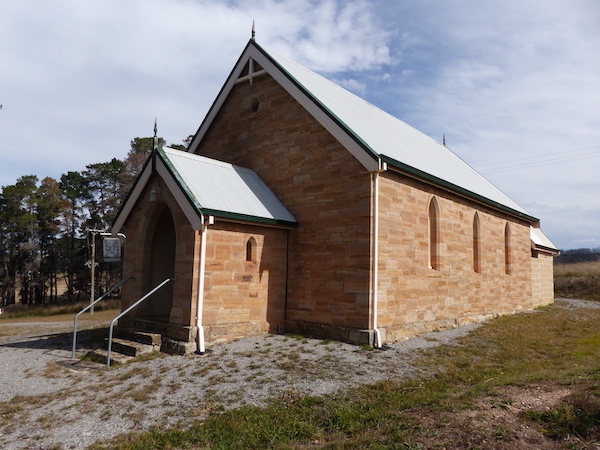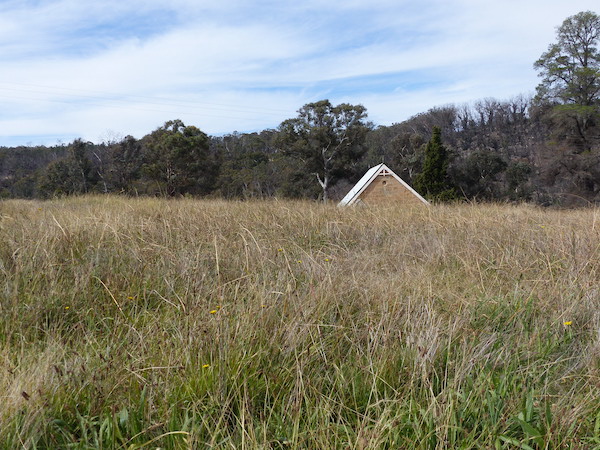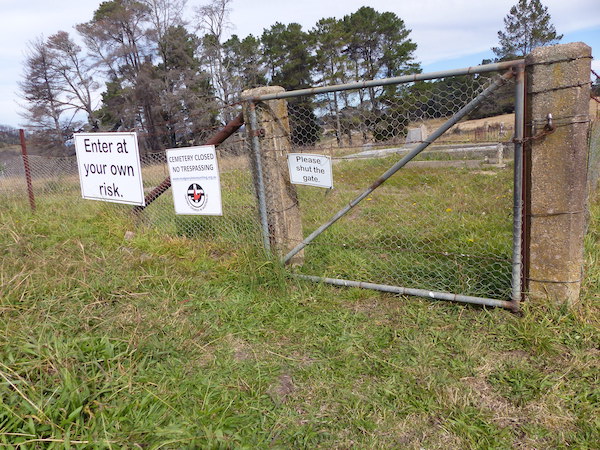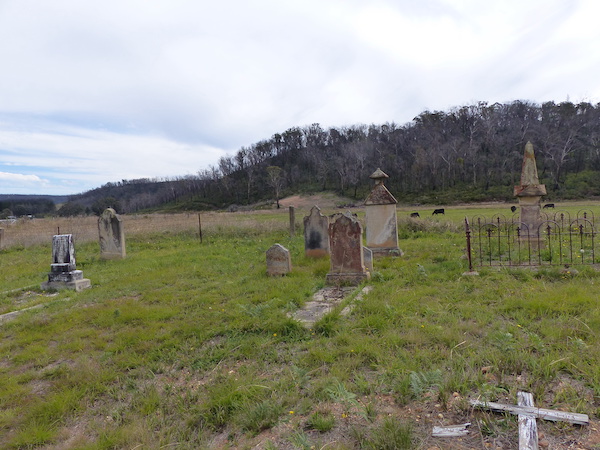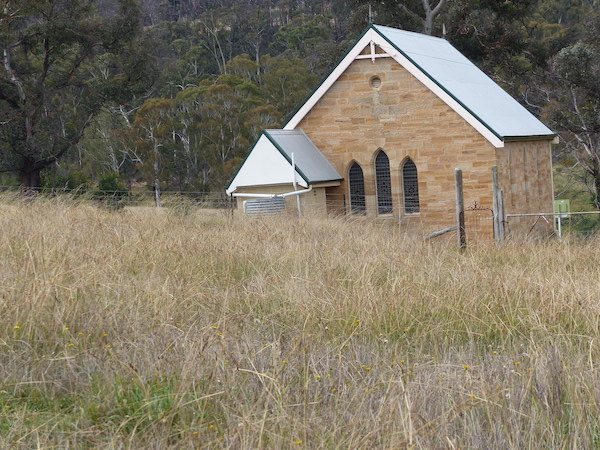© Jim Low
St John’s Church, Running Stream, was opened in September 1906. Called a ‘union church’, it replaced a rundown, wooden building that had served those of the Presbyterian faith. Its reincarnation as a union church suggests perhaps a new spirit of ecumenicalism. However, it only gathered in its own congregation of Christian believers, those who followed a fundamentalist doctrine and excluded Roman Catholics.
An anonymous poem entitled The Running Stream was published in The Lithgow Mercury 27 September 1912 on page 3. This poem reminds us how many ‘peaceful spots’ like Running Stream came to be. Situated at the foot of the eastern ascent of Cherry Tree Hill on the Mudgee Road, the presence of good grass and a ‘never-failing’ flow of water made this location a favourite spot for teamsters to rest their horses.
When gold was discovered close by on the Turon River at Sofala and later west at Gulgong, many gold seekers passed this way.
‘This favoured place some years ago, As elders here have told Was once the place for camping men, When bound for Turon Gold.’
In 1970 and 1971 I also passed this way many times on my return trips to Sydney from Binnaway. My first teaching position was in this little township on the Castlereagh River. On most of these trips I passed through Running Stream at night, oblivious to the many lonely buildings that stood next to the road. It was not until later travels that I became aware of buildings like St John’s Church at Running Stream.
In a neighbouring paddock there is an unobtrusively positioned cemetery. From there the church appears to be sinking in the surrounding, long grass, with only its roof visible. Signs on the cemetery’s wire fence present the visitor with somewhat of a dilemma. One sign reads, ‘Enter at your own risk’ while another informs us that the cemetery is closed and there should be ‘no trespassing’. As if our decision had already been made for us, a smaller sign at the gate reminds us to ‘please shut the gate’.
Running Stream had its own rifle range. I first became aware of this when reading a small volume of poetry by ‘Batcher’. The poems were published in Sydney by John Sands Ltd in 1910. In the poem The Range at Running Stream, the poet notes that this noisy range is certainly out of character with the serene, country setting surrounding it.
‘This is the spot where marksmen come To fire till the setting sun; Sequestered place, you’d scarcely think It knew report of gun; This is the spot where rifles crack Wakes the sleeping life around…’
The last verse of the poem reminds us of the young men who trained there before the First World War. These, we are told, are the quiet men who ‘heed at their country’s call’, being ready to ‘conquer or nobly fall’.
‘And foes will have to deal with them When placed at our country’s back.’
To the modern day traveller, places like Running Stream now present as sparsely populated, rural localities in the swift, passing landscape. They are not obvious locations which cause the traveller to stop, even if these places have a natural beauty.
Thankfully some people in the past documented their experiences in these places, thereby affording opportunities for us to engage more fully with such locations. I have already referred to poetry as one such means. Local newspaper reports were a popular way of recording events that happened.
For example, a contributor to the Mudgee Guardian and North-Western Representative, 3 February 1899, provides a narrative of a visit to the annual Sunday School picnic held at Running Stream. This event occurred on 26 January, referred to then as Anniversary Day rather than Australia Day.
The report described a very happy and caring community. Outdoor games were enjoyed by ‘several dozens of happy looking youngsters’, as well as ‘a splendid lunch’. One of the activities involved ‘the climbing of a slippery pole by the boys, who on gaining the top reach a bag of sweets with their mouths and descend rather more quickly than they ascend’. We are then told of the sudden appearance of two shapes, ‘masked and clad in white gowns, on which are stitched coloured bags of sweets’. ‘A lively chase’ began as the children endeavoured to pluck the sweets from the sheets. Later in the day, after more ‘good things’ were partaken, book prizes were presented in the church and a concert followed. ‘I think that Running Stream children are decidedly fortunate’, the writer concluded.
This glimpse into life at Running Stream, over one hundred years ago, obviously added greater meaning to my recent visit there. This place was once home to a vibrant community. Its residents gained a sense of belonging here, forming friendships and being nurtured for life’s experiences. I like to think that perhaps they formed strong and lasting memories of their once special, little township. .
There is a definite optimism implied in the name of this place, where the water always flows. Running Stream still entices the curious traveller to stop and appreciate the beauty of its landscape. Why not start your exploration at St John’s Church and cemetery?
Read a poem by Jim – The Church at Running Stream

